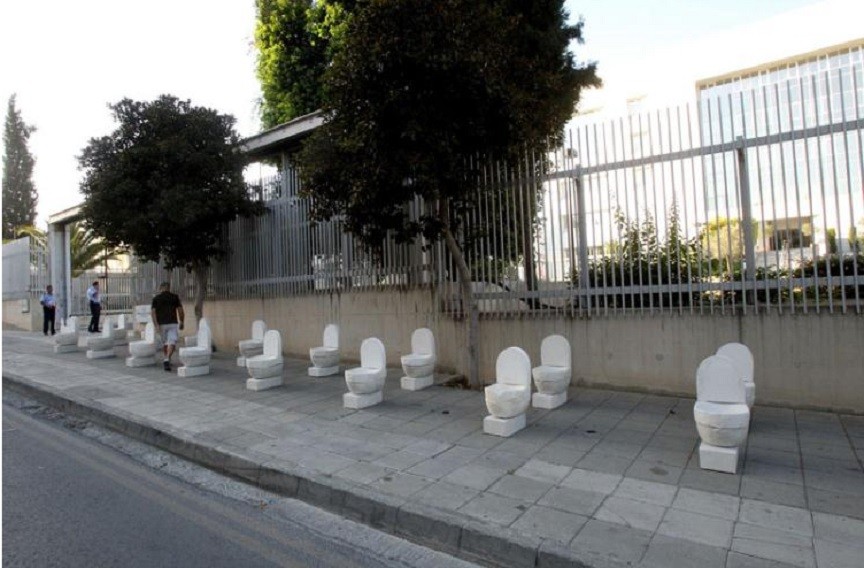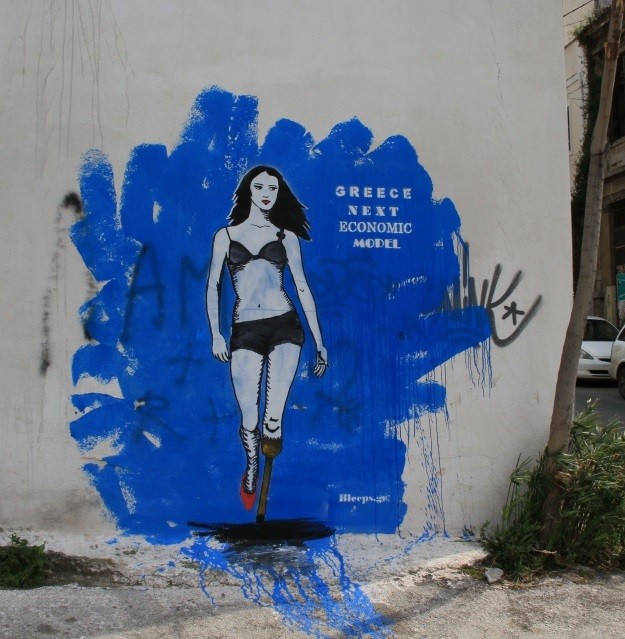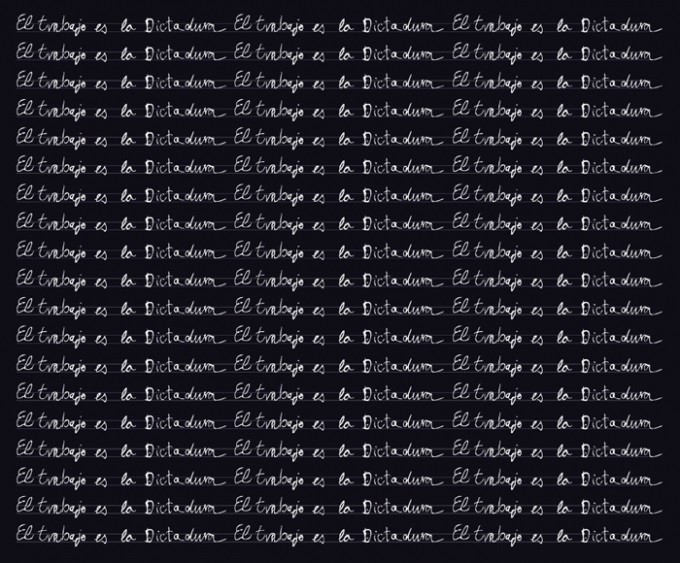Cyprus Central Bank's Tomb-Toilets Join Financial Crisis Art Club [SLIDESHOW]
Andreas Efstathiou's installation is latest in political artwork highlighting economic problems in Greece, Spain and Italy






A Cypriot artist's installation of 20 toilets outside the Central Bank in Nicosia is the latest in a growing phenomenon of artworks being used to comment on Europe's intractable economic crisis.
Seen from one angle, Andreas Efstathiou's exhibit looks like a collection of tombstones.
"If I have to choose a name for it I'll call it The Two Views," Efstathiou told IBTimes UK. The artist described his work as a "visual protest" against Cyprus' strapped situation.
"People walking past the Central Bank will see an array of toilets and get the message and understand what has happened to this country," he told local media.
"The view from behind should remind them where they will end up," Efstathiou added.
"Isn't it the truth," said 62-year-old Kokos Konstantinou, a local resident, as he passed by and gazed at the artwork.
Efstathiou added: "I like the reaction of people passing by. I enjoy the sarcastic smile on their faces."
Cyprus agreed on a €23bn (£19.5bn) bailout in March with its eurozone partners and the IMF.
In Greece, an artist going under the name of Bleeps has developed a reputation for his street art about the financial crisis.
One painting shows a female model with one leg amputated below the knee. Next to it are the words: "Greece next economic model." Another work depicts a banker clutching a safe, as "Death" stands beside him.
"The established motivation for every activity is money. The motivation was never, after all, human beings," Bleeps' manifesto reads. "In capitalism, if you are not a part of the bourgeoisie, you are just a consumable unit."
In Italy, LOVE, a 36ft white marble sculpture by Maurizio Cattelan has been standing outside Milan's stock exchange since 2010.
The sculpture consists of a massive hand giving the fascist roman salute. All of its fingers except for the middle one have been cut off.
Cattelan said his sculpture was a protest against totalitarianism, although some critics say it can be read it as an insulting gesture to the world of finance.
Leading Spanish artist Santiago Sierra is also renowned for using art to highlight social injustice, particularly in the labour market.
In January Sierra hired 30 people to write the words "Work is Dictatorship" on a series of notebooks, eight hours a day for 12 days.
© Copyright IBTimes 2025. All rights reserved.






















